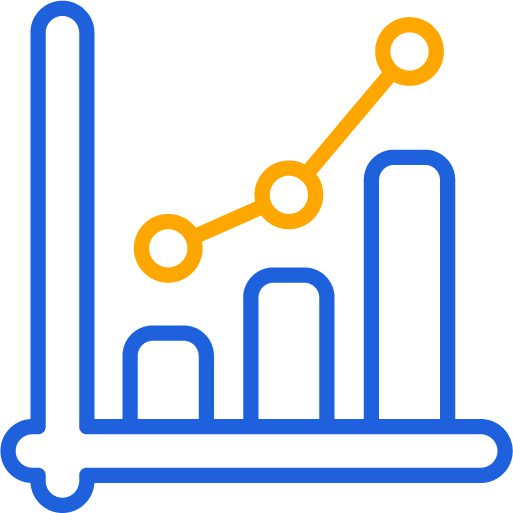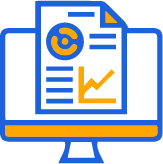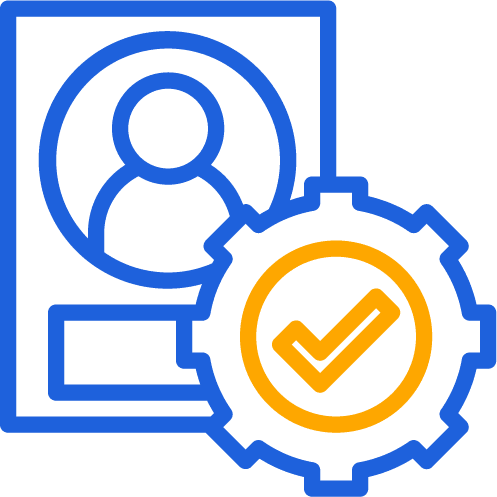Best Australia Forex Brokers In 2023
When delving into the world of forex trading, selecting the best Australian forex broker is a paramount decision for every trader, and this holds especially true for best Australia-based brokers. With the abundance of options available, it becomes essential to choose a reliable and well-regulated best Australia forex brokers that aligns with your trading goals.
To aid in this pivotal choice, the dedicated team at CompareBroker has undertaken exhaustive research, meticulously assessing international best forex brokers in the context of Australia’s local regulatory environment. This comprehensive guide aims to provide Australia-based traders with insights into the best-suited forex brokers, ensuring a secure and informed trading journey.
Best Australia Brokers
Pepperstone – our best Australian brokerage 1st choice
ThinkMarkets – Our best Australian brokerage 3rd choice
MultiBankGroup– Our best Australian brokerage 5th choice
What are the best forex brokers in Australia in 2023?

Pepperstone is a CFD Broker. A CFD (Contract for Difference) broker is a financial services provider that allows traders to trade CFDs on various financial instruments, such as stocks, commodities, currencies, and indices. Pepperstone is also a Spread Betting broker. A spread betting broker is a financial services provider that allows traders to speculate on the price movements of various financial instruments, such as stocks, currencies, commodities, and indices, through spread betting.
Pepperstone is regulated by the FCA, CySEC, ASIC. Pepperstone scores 9 out of 10 on the regulation section. Pepperstone doesn’t charge an inactivity fee. Inactivity fee in trading refers to charges by some brokers or trading platforms to traders who do not actively trade or use their accounts for a certain period of time. Pepperstone doesn’t charge fees for deposits and it doesn’t charge fees for withdrawals. Pepperstone scores 10 out of 10 on the commissions and fees section.
You can read the full detail reviews of more than 10,000 words here
AvaTrade has grown into a significant online trading platform since its inception in 2006, with about 200,000 registered clients executing up to 2 million deals each month totaling over $60 billion in trading volume. AvaTrade is regulated by the Central Bank of Ireland, ASIC, IIROC, FSA, FSB, UAE, and the British Virgin Islands, every new customer must pass a few simple compliance tests to verify that you understand the risks of trading and are permitted to trade.
AvaTrade is one of the few brokers who offers both the MetaTrader 4 and MetaTrader 5 platforms. AvaTrade allows the user to perform a 0.01 Lot trade.
Trading Features:
- Allows for scalping
- Allows for hedging
- Minimum deposit is low.
Accounts offered:
- Mini account
- Standard account
- Islamic accountDemo account
- Micro account
Funding methods:
- Skrill
- Payoneer
- PayPal
- NetellerCredit cards
- Bank Transfer
You can read full reviews about AvaTrade here
ThinkMarkets is an Australain forex brokerage that offers services for trading forex and CFDs. Traders have access to a vast array of items in a diverse range of marketplaces, including commodities, equities, indices, and cryptocurrencies, among other financial assets. The FCA, FSCA, and ASIC are the regulatory bodies that oversee it. All of ThinkMarkets’ customers’ money are kept in a separate bank account, and the company only deals with tier-1 financial institutions. ThinkMarkets first opened its doors in 2010, and its headquarters are now located in Australia.
When compared to the average EUR/USD spread of 0.70 pips, ThinkMarkets’ minimum EUR/USD spread of 0.0 pips is quite a little lower than that figure. It is important to keep in mind that the ThinkZero account is the only one that offers zero spreads. There is a commission fee of seven United States dollars per lot for each round journey. Although there is no commission charged, the spreads on the standard account are wider.
Trading Features:
- Offers STP
- Low min deposit
Accounts offered:
- Demo account
- Zero account
- Standard account
- Islamic account
Funding methods:
- Credit cards
- Bank Transfer
- Skrill
- Neteller
You can read the full review here
Axi, which has its headquarters in Australia and was established in 2007, has grown to become one of the most best Forex brokers in the world since then. It has done this by using some of the most renowned trading platforms in the globe. These platforms provide traders access to the most latest market data on forex, CFDs, and indices, which in turn enables them to trade at rates that are continuously competitive.
Traders have access to a wide range of products from which to pick, including contracts for difference (CFDs) based on underlying financial assets such as stock indexes, metals, foreign currencies, and commodities. Axi’s web-based trading platform is also available in a number of other languages for users’ convenience.
Axi also offers mobile trading, which ensures connection across all of the most important platforms and devices, and has servers located in New York, close to the exchange, to facilitate the execution of transactions more quickly. Additionally, it offers Expert Advisors for automated trading, as well as the choice to trade with either Standard or Pro accounts, regardless of whether the scenario is simulated or real.
- Allows hedging
- Offers STP
- Allows scalping
- Free VPS (For clients who trade 20 lots per month)
- Low minimum deposit
Accounts offered:
- Micro account
- Mini account
- Standard account
- Zero spread account
- VIP Account (Axi Elite)
- Demo account
- ECN account
- Islamic account
Funding methods:
- Bank Transfer
- Skrill
- Payoneer
- Credit cards
- Neteller
- Crypto (For clients based outside of Europe)
You can read the full review here
The MultiBank Exchange Group is a one of the best Australian trading broker that offers services related to foreign exchange trading. Traders have access to a diverse selection of goods in a number of different marketplaces. These items include indices, shares, commodities, and currencies. It is needed that a minimum deposit of fifty dollars be made in order to open a live account, and it is regulated by ASIC, FSC, BaFin, CNMV, and FMA. On the other hand, MultiBank Group gives you access to a no-cost trial account so that you can get a feel for their system and try out different features in a risk-free environment. When compared to the average EUR/USD spread of 0.70 pips, the minimal EUR/USD spread offered by MultiBank Group, Australian brokerage company, is considered to be typical at 0.8 pips.
At MultiBank Group, you have the opportunity to trade over 20,000 distinct products, among which are more than 55 currency pairings. One of the few Australian forex brokers that offers both the MetaTrader 4 and MetaTrader 5 trading platforms, Multibank Group is one of such brokers. Check out our MT4 vs MT5 comparison to learn more about the differences between the two platforms. In addition to this, MultiBank Group provides access to their own technology, known as Pure ECN Pro. Traders may do business on their choice of device owing to downloadable applications available for both Mac and Windows operating systems.
You can read the full review here
Australian Forex Brokers Comparison
Compare Australian forex and CFDs or make a side-by-side comparison of different forex and CFDs brokers in Australia by using either the forex broker comparison tool or the summary table that is provided below. This broker list is arranged according to the overall rating that each company has on CompareBroker.io
Comparing Trading Cost of Australia forex brokers

Comparing Trading platform between Australia forex brokers
Trading platforms provide access to the foreign currency market and enable traders to analyse market conditions, monitor positions, and place transactions. Trading platforms also let traders to execute deals. View a side-by-side comparison of the trading platforms that are offered by the most reputable forex brokers in Australia, as determined by our own independent product testing.

Comparing investment opportunities between Australia forex broker
We keep a careful eye on the availability of various financial products, including but not limited to social copy trading, forex trading (both CFD and spot), stock trading (both CFD and non-CFD), spread betting, exchange-traded funds (ETFs), and more. Within our comprehensive and impartial database, these different forms of investments are monitored as variables in their own right. Investigate the types of investments that are available at the best forex brokers in Australia.


Frequently Asked Questions
How to trade forex
Trading forex involves buying and selling currencies with the goal of making a profit. It can be a complex endeavor, but I’ll provide you with a general overview of the steps involved in trading forex:
Educate Yourself: Before you start trading, it’s crucial to educate yourself about the forex market. Learn about basic concepts such as currency pairs, exchange rates, pips, lots, and different trading strategies. There are numerous online resources, courses, and books available to help you understand the fundamentals of forex trading.
Choose a Reliable Forex Broker: Selecting the right forex broker is essential. Look for a broker that is regulated by a reputable financial authority and offers a user-friendly trading platform. Consider factors such as spreads, commissions, leverage, and available trading tools.
Create a Trading Plan: A trading plan outlines your trading goals, risk tolerance, preferred trading style, and strategy. It should also include rules for entry and exit points, risk management, and position sizing. A well-defined trading plan helps you stay disciplined and make informed decisions.
Practice on a Demo Account: Most brokers offer demo accounts that allow you to practice trading with virtual money. This is a valuable step to gain practical experience and test your trading strategy without risking real funds.
Fund Your Trading Account: Once you’re comfortable with your demo trading, you can fund your live trading account. Deposits can often be made via bank transfer, credit card, or other payment methods.
Start Trading: With a funded account, you can start trading real money. Monitor the forex market, analyze currency pairs, and execute trades based on your trading plan. Remember to start with smaller position sizes and gradually increase as you gain experience.
Technical and Fundamental Analysis: Traders use both technical and fundamental analysis to make trading decisions. Technical analysis involves studying price charts, patterns, and indicators to predict price movements. Fundamental analysis involves analyzing economic indicators, news, and events that impact currency values.
Risk Management: Managing risk is crucial to long-term success. Never risk more than you can afford to lose on a single trade. Use tools like stop-loss and take-profit orders to limit potential losses and secure profits.
Stay Informed: Stay updated on global economic and political events that can influence currency markets. Economic calendars and news sources can help you anticipate market movements.
Continuous Learning: The forex market is dynamic, and continuous learning is essential. Keep refining your trading strategy, learning new techniques, and adapting to changing market conditions.
How to trade forex for beginners
Trading forex as a beginner can be both exciting and challenging. Here’s a step-by-step guide to help you get started with forex trading:
Education and Research:
- Begin by learning the basics of forex trading. Understand key concepts such as currency pairs, pips, lots, leverage, and order types.
- Explore different trading strategies and decide which ones align with your trading goals and risk tolerance.
- Study technical analysis (chart patterns, indicators) and fundamental analysis (economic indicators, news events) to make informed trading decisions.
Choose a Reliable Broker:
- Select a reputable and regulated forex broker. Look for features like user-friendly trading platforms, competitive spreads, good customer support, and educational resources.
- Open a demo account with your chosen broker to practice trading without risking real money.
Develop a Trading Plan:
- Create a well-defined trading plan that outlines your goals, risk tolerance, preferred trading style, and strategy.
- Determine your entry and exit criteria, position sizing, risk-reward ratio, and how you’ll manage trades.
Practice on a Demo Account:
- Use the demo account to practice executing trades and implementing your trading plan.
- Gain experience and build confidence in your trading skills without risking real capital.
Understand Risk Management:
- Never risk more than you can afford to lose on a single trade.
- Use risk management tools like stop-loss orders to limit potential losses.
- Consider your risk per trade as a percentage of your total trading capital.
Start Trading with a Small Account:
- Once you’re comfortable with your demo trading, open a live trading account with a small amount of capital that you can afford to lose.
- Start with smaller position sizes to manage risk as you gain experience.
Monitor the Markets:
- Keep an eye on currency pairs that interest you. Analyze charts, identify trends, and look for potential trading opportunities.
Practice Patience and Discipline:
- Stick to your trading plan and avoid making impulsive decisions based on emotions.
- Be patient and wait for setups that align with your strategy.
Start Simple and Gradually Expand:
- Begin with a single currency pair and master your strategy before diversifying.
- As you gain experience, you can explore more currency pairs and trading strategies.
Keep Learning and Adapting:
- Forex trading is a continuous learning process. Stay updated on market developments, refine your trading strategy, and adapt to changing market conditions.
Keep Records:
- Maintain a trading journal to record your trades, reasons for entry and exit, and lessons learned. This will help you track your progress and improve over time.
Seek Knowledge and Mentorship:
- Read books, watch educational videos, and consider joining trading communities to learn from experienced traders.
- Consider seeking advice from professionals or mentors who can provide valuable insights.
How to trade forex Australia
Trading forex in Australia follows a similar process to trading in other countries, but there are specific regulations and considerations you should be aware of. Here’s a guide on how to trade forex in Australia:
Educate Yourself:
- Begin by learning the basics of forex trading. Understand currency pairs, pips, lots, and how the forex market operates.
- Study different trading strategies, technical analysis, and fundamental analysis.
Regulations and Broker Selection:
- Choose a forex broker that is regulated by the Australian Securities and Investments Commission (ASIC). Verify the broker’s license and reputation.
- Look for brokers that offer competitive spreads, reliable trading platforms, and good customer support.
Open a Trading Account:
- Select the type of trading account that suits your needs (standard, mini, micro, etc.).
- Provide necessary identification and documents to verify your identity and comply with anti-money laundering (AML) regulations.
Fund Your Account:
- Deposit funds into your trading account. Brokers offer various payment methods such as bank transfers, credit/debit cards, and electronic wallets.
Practice on a Demo Account:
- Before trading with real money, use the broker’s demo account to practice your trading strategy and gain experience.
Develop a Trading Plan:
- Create a trading plan that outlines your trading goals, risk management strategy, preferred trading times, and instruments you’ll trade.
Understand Risk Management:
- Implement effective risk management techniques, such as setting stop-loss and take-profit orders to limit potential losses.
Trading Analysis:
- Analyze the forex market using both technical and fundamental analysis.
- Technical analysis involves studying price charts, patterns, and indicators.
- Fundamental analysis involves analyzing economic indicators and news events that impact currency prices.
Execute Trades:
- Use your trading platform to enter and exit trades based on your analysis and trading plan.
- Monitor your trades and adjust your positions as needed.
Stay Informed:
- Keep up-to-date with economic calendars, news releases, and events that can influence currency markets.
Continuous Learning:
- Forex trading is an ongoing learning process. Stay informed about market developments and continually improve your trading skills.
Tax Considerations:
- Understand the tax implications of forex trading in Australia. Forex trading profits may be subject to capital gains tax.
Record Keeping:
- Maintain a detailed trading journal to track your trades, decisions, and outcomes. This helps you identify strengths and areas for improvement.
How to trade forex with leverage
Trading forex with leverage allows traders to control a larger position size with a relatively smaller amount of capital. Leverage amplifies both potential profits and losses, making it a powerful tool that requires careful consideration and risk management. To trade forex with leverage, a trader first selects a leverage ratio offered by their broker, such as 10:1 or 50:1. For example, with a 50:1 leverage, a trader can control a $50,000 position with just $1,000 of their own capital.
While leverage can enhance gains, it also increases exposure to market fluctuations. Therefore, traders must implement effective risk management strategies, including setting stop-loss and take-profit orders, to limit potential losses. It’s crucial to thoroughly understand the risks associated with leverage and only use it if you have a solid trading plan and the necessary knowledge. As a responsible practice, traders should never risk more than they can afford to lose and should be aware that using high leverage can magnify both profits and losses, requiring a cautious and disciplined approach to trading.
How to trade forex with ai
Trading forex with artificial intelligence (AI) involves using advanced algorithms and technology to make trading decisions. Here’s a general overview of how to trade forex using AI:
Understand AI in Forex Trading:
- Familiarize yourself with the concept of using AI in trading. AI can analyze vast amounts of data, recognize patterns, and make predictions based on historical and real-time market information.
Choose an AI Trading Platform:
- Research and select a reputable AI-powered trading platform or software. These platforms often offer automated trading strategies, signal generation, and other AI-based tools.
Data Collection and Analysis:
- AI systems require historical and real-time market data. Ensure your chosen platform has access to accurate and timely data feeds.
Algorithm Development:
- Depending on the platform, you may need to develop or customize trading algorithms. This could involve coding or configuring the AI to follow specific strategies.
Backtesting:
- Test the AI algorithm using historical data to assess its performance and effectiveness. This helps you understand how the AI would have performed in past market conditions.
Risk Management:
- Implement robust risk management parameters within the AI system. This may include setting stop-loss and take-profit levels, as well as controlling position sizes.
Real-Time Monitoring:
- Once the AI system is live, monitor its performance in real-time. Be prepared to intervene if necessary or adjust settings based on changing market conditions.
Adaptation and Optimization:
- Continuously analyze the AI’s performance and refine the algorithm as needed. Market dynamics can change, requiring adjustments to maintain effectiveness.
Diversification:
- Consider using multiple AI algorithms or strategies to diversify your trading approach and reduce risk.
Understand Limitations:
- While AI can analyze data and patterns, it may not be foolproof. It’s essential to understand that AI systems can also encounter errors and unexpected market movements.
Education and Learning:
- Even if you’re using AI, it’s crucial to understand forex market dynamics and trading principles. This knowledge helps you interpret AI-generated signals and make informed decisions.
Demo Testing:
- Before trading with real money, test the AI system on a demo account to ensure it performs as expected in a live market environment
How to trade forex like a pro?
Trading forex like a pro entails mastering a blend of skills, discipline, and strategy. Professionals approach the market with a comprehensive understanding of both technical and fundamental analysis, allowing them to interpret price charts, identify patterns, and gauge market sentiment. They meticulously formulate and adhere to well-defined trading plans, specifying entry and exit points, risk management strategies, and position sizing. Seasoned traders possess an acute awareness of market trends and economic indicators, enabling them to anticipate potential price movements. Successful trading like a pro also demands emotional control, enabling traders to make rational decisions even in the face of market volatility. To trade forex like a pro, one must invest time in continuous learning, refine their skills through practice, and possess the resilience to adapt to evolving market conditions.
How to trade forex news
Trading forex news involves capitalizing on significant market movements triggered by the release of economic indicators, geopolitical events, and other news releases. To effectively trade forex news, traders must stay well-informed about upcoming events through economic calendars and news sources. The key lies in anticipating market reactions based on the divergence between the actual data and market expectations. Rapid execution of trades immediately after the news release is crucial, as volatility can lead to swift price movements. It’s essential to employ risk management tools like stop-loss orders to mitigate potential losses, given the unpredictable nature of news-driven market movements. Trading forex news demands a deep understanding of market dynamics, swift decision-making, and the ability to interpret and analyze data in real-time, making it a strategy favored by experienced traders.
Can I do forex trading in Australia
Yes, you can engage in forex trading in Australia. The country offers a conducive environment for forex trading, with a well-regulated market overseen by the Australian Securities and Investments Commission (ASIC). As an aspiring forex trader in Australia, you have access to a range of reputable and regulated forex brokers that provide user-friendly trading platforms, competitive spreads, and various currency pairs to choose from. It’s important to ensure you select a licensed broker and adhere to local regulations. With a combination of education, practice, and a disciplined approach, individuals in Australia can actively participate in the dynamic world of forex trading, potentially benefiting from its opportunities and challenges.
Can I trade with forex with $100
Yes, you can start trading forex with as little as $100. Many brokers offer micro or mini accounts that allow you to trade with a small initial deposit. These accounts provide an opportunity for beginners to get a feel for real trading while managing their risk. With a $100 investment, you can take advantage of leverage provided by your broker, which allows you to control a larger position size than your initial capital.
However, it’s important to approach trading with caution and a realistic mindset. While starting with a small amount is possible, trading with a limited capital requires careful risk management and a focus on preserving your funds. You should be prepared for the potential of both gains and losses, and it’s advisable to start with smaller position sizes and gradually increase as you gain experience and confidence.
Remember that successful forex trading involves continuous learning, practice, and discipline. It’s recommended to first practice on a demo account to familiarize yourself with the platform and your trading strategy before transitioning to live trading with real money.
Is forex trading legal in Australia for international students
Forex trading is legal in Australia for international students, as long as they adhere to the regulations set by the Australian government and comply with the rules of the Australian Securities and Investments Commission (ASIC). International students are allowed to participate in the forex market through regulated forex brokers that offer services to residents and non-residents alike. However, it’s crucial for international students to ensure they have the necessary permissions to engage in financial activities and that they follow tax regulations in both Australia and their home country. As with any financial endeavor, it’s recommended that international students thoroughly educate themselves about forex trading, practice on a demo account, and exercise responsible risk management before committing to live trading.
How to trade forex for beginners Australia?
For beginners in Australia, entering the world of forex trading involves several steps. First, educate yourself about the forex market by learning the basics of currency pairs, pips, and leverage. Next, choose a reputable forex broker regulated by the Australian Securities and Investments Commission (ASIC), ensuring a secure trading environment. Open a demo account to practice trading with virtual funds, honing your skills and testing different strategies. Develop a trading plan that outlines your goals, risk tolerance, and entry/exit strategies. Familiarize yourself with technical and fundamental analysis to make informed trading decisions. As you gain confidence, transition to a live trading account with a small amount of capital you can afford to lose. Remember to practice disciplined risk management and continue learning to navigate the dynamic forex market successfully.
Is forex trading safe?
Forex trading, like any form of investment, carries inherent risks and requires careful consideration. While forex trading offers potential for profit, it also involves the possibility of substantial losses. The degree of safety in forex trading depends on factors such as one’s knowledge, experience, risk management strategies, and the reliability of the chosen forex broker. Using regulated and reputable brokers can enhance the safety of your trading experience by ensuring fair practices, secure transactions, and adherence to regulatory standards. Moreover, traders who diligently educate themselves, practice on demo accounts, develop sound trading plans, and exercise disciplined risk management can mitigate risks and create a safer trading environment. It’s crucial for traders to understand that success in forex trading requires continuous learning, careful analysis, and a realistic understanding of both profit potential and potential losses.
Best Australia Forex Brokers
The best forex brokers in Australia charge a variety of commissions, which we have outlined in the table below.


























